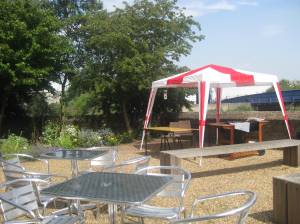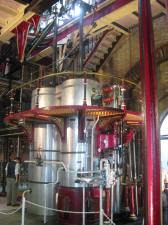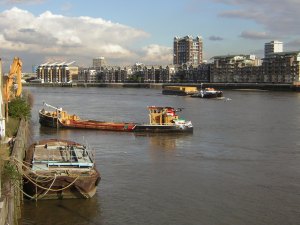I spent an enjoyable, if very hot, day looking at a couple of sites in East London on Sunday. Both sites were involved – rather tenuously – with the ill fated “Story of London” festival.
The Story of Three Mills Island
I only found out about this by chance. An open day which included both the House Mill and the new Three Mills Lock was too good to miss. Not least as I spent a lot of time with colleagues working up a very complicated funding deal for the new lock.
The event was not very well attended. But the tours around the wonderful House Mill were popular, and a coffee in the Miller’s Garden was delightful.

House Mill tour

The Miller's Garden
The new lock is complete and open – but public access to the footpath over the end of the lock is not available yet – hopefully it will be in the next few weeks.
The lock will allow barges of up to 350 tonnes capacity to access the Olympic Park construction site, and is already being used to take construction waste away from the site.

The new Three Mills Lock
Three Mills island is a genuine hidden treasure. It includes two mills, some open land, the lock, and the 3 Mills TV and film studios. Among the usual sightings of coots and ducks, I noticed that Sand Martins are nesting in disused drainage pipes next to the River Lea.
Crossness Engines
A tube trip, two DLR trains, and a short rail hop took me to Abbey Wood station where a free minibus completed my journey to Crossness for one of the infrequent steaming days of their huge beam engine. This was a very welcome insight into a major restoration project. The well supervised visitors are allowed to enter the bowels of this incredible machine. Bowler hatted engineers were on hand to answer questions, and some interesting displays and exhibitions completed the event.

Detail of Crossness engine room

Crossness Engine
The engine operates without any accompanying crashes and bangs or blasts of steam. But in its way the smooth operation of the massive beam and flywheel, with the spinning and shifting of various well oiled bits of kit, was even more spectacular for its peace and elegance.
Interesting to overhear at the entrance (£5) some visitors insisting that the event should be free as it was part of the Story of London festival. Only one of the volunteers seemed to even have heard of the Story of London – and he admitted that the engine open day was planned before the Story of London and had just been included to provide some additional publicity!
More Photos



 Posted by logistical
Posted by logistical 